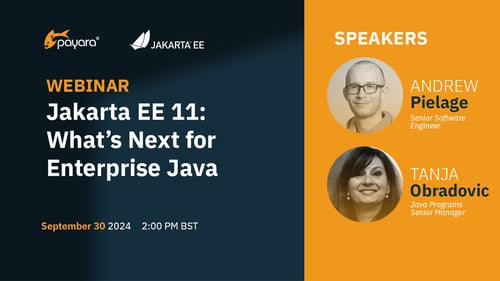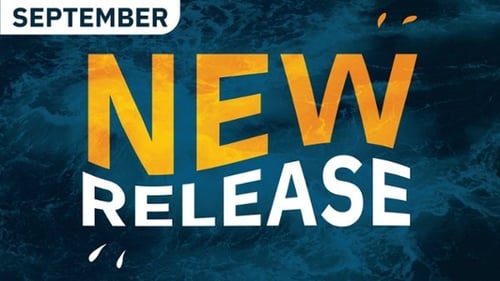Nugget Friday - Simplifying Multiline Strings with Java Text Blocks
Published on 20 Sep 2024
by Luqman Saeed
Topics:
Java
|
0 Comments
Working with multiline strings in Java has historically been a challenge, often resulting in messy code that is hard to read and maintain. Whether you're dealing with SQL queries, JSON or HTML templates, managing escape characters and manual line breaks is a cumbersome process. In today's Nugget Friday, we'll look at how Text Blocks can redefine how developers handle multiline strings, making code cleaner, more readable and easier to maintain.
Improving Responsiveness in Jakarta REST (JAX-RS) Services through Asynchronous Processing
Published on 19 Sep 2024
by Luqman Saeed
Topics:
REST,
Java,
Jakarta EE
|
0 Comments
Speed and responsiveness are very important in the development and use of modern RESTful APIs in Java applications, as they help ensure efficiency and scalability, especially as businesses move towards cloud-native applications. The primary means of achieving high speed, responsiveness, efficiency and scalability is through asynchronous processing. It allows applications to handle requests efficiently and perform tasks without getting stuck, making things run smoother and faster for the user while supporting scalability.
In this post, we'll look at how asynchronous processing works in Jakarta RESTful Web Services (JAX-RS or Jakarta REST) and how to implement async patterns in JAX-RS to enhance your Java web services, so you can build powerful and scalable RESTful APIs in Java.
Join Live Webinar - Jakarta EE 11: What’s Next for Enterprise Java
Published on 18 Sep 2024
by Dominika Tasarz
Topics:
JakartaEE,
news and events,
Payara Events,
Java,
Jakarta EE,
Jakarta EE 11
|
0 Comments
Jakarta EE 11: What’s Next for Enterprise Java
Monday, 30th of September, 2pm BST
Register: https://www.crowdcast.io/c/jakarta-ee-11-whats-next
Join Live Webinar - Ensuring Long-Term Stability with Payara Platform 4 Lifetime Support
Published on 17 Sep 2024
by Dominika Tasarz
Topics:
JakartaEE,
news and events,
Payara Events
|
0 Comments
Ensuring Long-Term Stability with Payara Platform 4 Lifetime Support
Tuesday, 24th of September, 2pm BST
Register: https://www.crowdcast.io/c/payara-platform-4-lifetime-support
Series: What’s Stopping Businesses from Application Server Migrations: Insights From Industry Players - Part 2
Published on 16 Sep 2024
by Chiara Civardi
Topics:
Developer,
Payara Platform,
Migration,
Digital Transformation
|
0 Comments
Migration Hesitation: Why Fear and Stagnation May Be Costing Your Business More Than You Think
There is no doubt that moving mission-critical applications to a new runtime environment is no small task. The fear of disruption, cost overruns and unknown risks often leads businesses to avoid necessary changes, even when the current system is far from optimal.
In the blog series ‘What’s Stopping Businesses from Application Server Migrations – Insights from Industry Players’ we explore one the reasons behind this hesitation and the real costs associated with migration fears. In the first blog post, we covered the fear of the unknown and business disruptions. In this second episode, we look at the fear of migration costs. In effect, as many business leaders reveal, the perceived financial risks often can overshadow the potential long-term benefits of moving to a different application server.
Nugget Friday - Exploring Jakarta RESTful (JAX-RS) Web Services Validation
Published on 13 Sep 2024
by Luqman Saeed
Topics:
REST,
Jakarta EE
|
2 Comments
Welcome to this week’s Friday Nugget and congratulations, you've made it through the week! What better way to kick off the weekend than by talking about simplifying something that is essential to ensure that data flows smoothly between clients and servers, meeting all necessary formats, types and rules. Correct, we are talking about validation.
What’s New In The September 2024 Payara Platform Release?
Published on 11 Sep 2024
by Luqman Saeed
Topics:
Payara Platform,
New Releases
|
0 Comments
We're happy to announce the latest releases of Payara Platform Community 6.2024.9, Payara Platform Enterprise 6.18.0 and Payara Platform Enterprise 5.67.0. These updates bring important security enhancements, bug fixes and component upgrades to improve your Jakarta EE and MicroProfile development experience on the Payara Platform.
Mastering Java Frameworks: Power Up Your Jakarta EE Skills As A Spring Boot Developer
Published on 10 Sep 2024
by Chiara Civardi
Topics:
Spring Boot,
Developer,
Jakarta EE
|
3 Comments
Jakarta EE, formerly known as Java EE (J2EE), and Spring Boot are the two de facto standards when it comes to enterprise Java applications, and the competition between these two alternatives to secure more market share has been going on for a while. Currently, many enterprise applications rely on Jakarta EE. However, most junior developers are familiar solely with Spring Boot. If you are a Spring Boot developer that needs to use or migrate to the Jakarta EE framework, we have created a guide to help you bridge your existing Spring Boot expertise with core Jakarta EE concepts.
Addressing the Application Server Needs of the Logistics Sector - Here's What Industry Experts Say
Published on 05 Sep 2024
by Chiara Civardi
Topics:
Payara Platform,
Payara Enterprise,
Case Study,
Logistics,
Digital Transformation
|
0 Comments
As the international trade volume and the e-commerce sector continue to surge, the global logistics industry is experiencing unprecedented growth. To address the needs of a rapidly expanding and demanding user base, logistics companies are investing in software applications that can support faster and more transparent delivery services. For enterprise logistics apps to function seamlessly, the use of a robust and reliable application server is a must to remain competitive.
Learn what Roman Zrazhevskiy, Founder and CEO of MIRA Safety, Sergey Taver, Marketing Manager of Precision Watches have to say about application runtimes for e-commerce and logistics and why Hermes and DPD choose Payara Platform.
How to Mitigate the Risks of Unsupported Open Source Technologies for Mission-Critical Applications
Published on 04 Sep 2024
by Chiara Civardi
Topics:
Payara Enterprise,
Migration,
Payara Community,
Jakarta EE,
open source
|
0 Comments
Open source technologies have become invaluable tools for software developers and software engineers focusing on innovation and experimentation. In particular, open source application servers can greatly help to accelerate project development, reduce costs and foster collaborative approaches within teams and across organizations.
However, when it comes to deploying mission-critical applications in production environments, open source runtimes that are unsupported can present significant risks, exposing businesses to unnecessary vulnerabilities.

%20Services%20through%20Asynchronous%20Processing%20Blog.png?width=500&name=Improving%20Responsiveness%20in%20Jakarta%20REST%20(JAX-RS)%20Services%20through%20Asynchronous%20Processing%20Blog.png)



%20Web%20Services%20Validation.png?width=500&name=Exploring%20Jakarta%20RESTful%20(JAX-RS)%20Web%20Services%20Validation.png)



